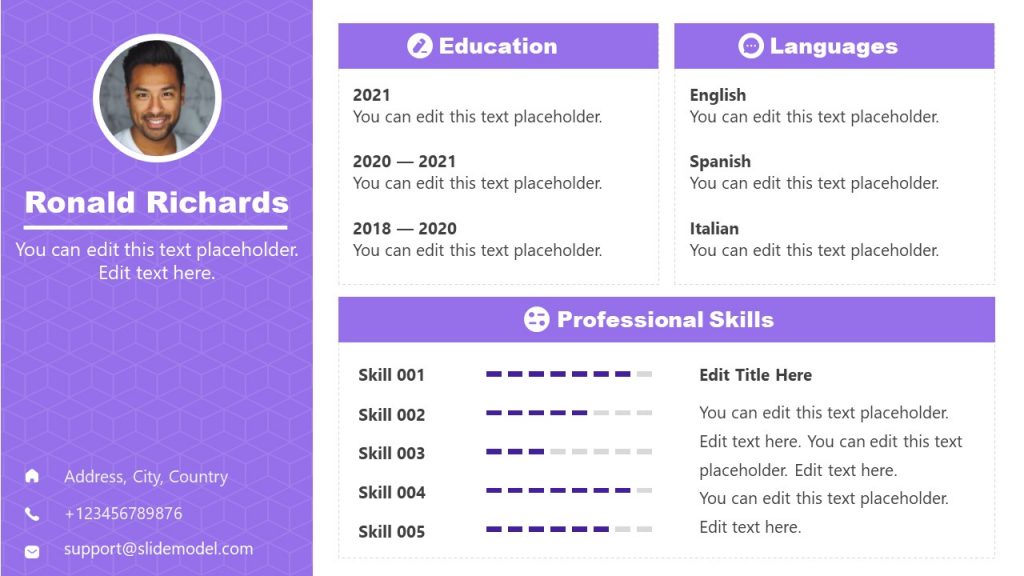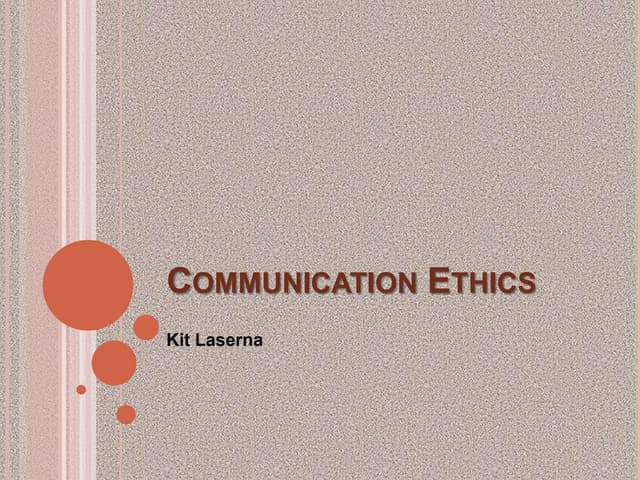Things To Say About Yourself In A Presentation
Are you wondering how to make a great impression when presenting yourself? Well, look no further! In this article, we’ll dive into the fascinating topic of things to say about yourself in a presentation. Whether you’re introducing yourself to a new class, participating in a job interview, or speaking at a conference, knowing how to talk about yourself confidently is essential.
When it comes to introducing yourself in a presentation, it’s essential to grab your audience’s attention right from the start. By sharing interesting facts about yourself, you can instantly captivate their interest and create a connection. In this article, we’ll explore different strategies and ideas to help you craft a compelling self-introduction that leaves a lasting impression.
No need to worry if you struggle with public speaking or feel nervous about presenting yourself. We’ll provide you with practical tips, useful phrases, and even some fun anecdotes to make your introduction engaging and memorable. With our guidance, you’ll be able to confidently share key information about yourself and shine in any presentation setting. So, let’s get started!
– Highlight your accomplishments and expertise.
– Discuss your passion for the topic.
– Share personal stories that relate to your presentation.
– Mention any relevant qualifications or certifications.
– Express your enthusiasm and genuine excitement.
By incorporating these elements, you can create a compelling and engaging introduction that leaves a lasting impression on your audience.

Things to Say About Yourself in a Presentation: Effective Strategies to Impress Your Audience
1. Start with an Engaging Introduction
When beginning your presentation, it’s essential to capture your audience’s attention right from the start. Start with a compelling and engaging introduction that highlights your expertise and generates curiosity. Consider incorporating a personal story, a surprising fact, or a relevant quote to make an immediate impact. This will help establish a connection with your audience and set the tone for the rest of your presentation.
Next, introduce yourself confidently and clearly. Provide your name, title, and a brief overview of your background or expertise. Keep in mind that this introduction is not a time to delve into every detail about yourself. Instead, choose a few key points that are relevant to your presentation topic and audience.
Remember, the goal of your introduction is to establish credibility, build rapport, and capture the attention of your audience. By crafting an engaging introduction, you set the stage for a successful presentation.
2. Highlight Your Accomplishments and Experience
During your presentation, it’s important to highlight your accomplishments and experience to establish yourself as a credible and trusted source of information. Share specific examples of projects you’ve worked on, goals you’ve achieved, or skills you’ve developed. This not only demonstrates your expertise but also provides evidence of your capabilities.
When discussing your accomplishments and experience, focus on the key points that are most relevant to your presentation topic. Highlight how your background aligns with the subject matter and emphasize the unique insights you can offer. This will help your audience understand why they should listen to you and trust your expertise.
Additionally, consider incorporating visuals such as charts, graphs, or images to showcase your accomplishments visually. This can enhance the impact of your message and make it more memorable for your audience.
3. Communicate Your Passion and Purpose
Passion is contagious, and when you’re passionate about your topic, it naturally draws others in and makes your presentation more compelling. Clearly communicate your passion and purpose throughout your presentation to captivate your audience and keep them engaged.
Explain why you are personally invested in the topic and how it relates to your values and beliefs. Share personal anecdotes or experiences that have shaped your perspective and fueled your passion. When your audience can see your genuine enthusiasm, they are more likely to be inspired and motivated by your message.
Furthermore, clearly articulate the purpose of your presentation and the impact you hope to make. Convey a sense of urgency and explain why your audience should care about what you have to say. By aligning your passion and purpose, you create a powerful connection with your audience and leave a lasting impression.
4. Connect with Your Audience on a Personal Level
Earning the trust and engagement of your audience requires creating a personal connection with them. Throughout your presentation, find opportunities to connect with your audience by using relatable language, sharing personal anecdotes, and asking thought-provoking questions.
Show empathy towards their challenges and experiences, and demonstrate that you understand their perspective. Use inclusive language to make everyone feel included and cater to a diverse audience. By connecting with your audience on a personal level, you build rapport and establish yourself as someone who understands and cares about their needs.
Additionally, make yourself approachable and accessible. Encourage audience participation by asking for their input, thoughts, or questions. This fosters a sense of collaboration and engagement, making your presentation more interactive and memorable.
5. Showcase Your Unique Personality and Style
While it’s important to maintain professionalism in your presentation, don’t be afraid to showcase your unique personality and style. Authenticity is key when connecting with your audience, and showing your true self can make your presentation more relatable and engaging.
Consider incorporating anecdotes, humor, or personal stories that reflect your personality. Use gestures, facial expressions, and vocal variations to add dynamism to your delivery. Stay true to your own communication style, but also be mindful of the cultural and professional norms in your setting.
When your audience can see your genuine personality shining through, they are more likely to connect with you on a deeper level, leading to a more impactful presentation overall.
6. Convey Confidence and Positive Body Language
Confidence is a powerful asset when delivering a presentation. Project confidence through your body language by standing tall, making eye contact with your audience, and using expressive gestures to reinforce your message.
Control your voice and speak clearly and audibly. Take deliberate pauses to emphasize key points and allow your audience to absorb the information. Remember to smile and maintain a positive demeanor throughout the presentation.
Confidence is contagious, and when your audience sees that you believe in what you’re saying, they are more likely to believe in it too. Your body language and vocal delivery are crucial in conveying confidence and maintaining your audience’s attention.
7. End with a Powerful Conclusion and Call to Action
As you wrap up your presentation, end with a powerful conclusion that leaves a lasting impression on your audience. Summarize the key points you’ve covered and reiterate the main takeaway you want your audience to remember.
Inspire your audience by ending with a memorable quote, a thought-provoking question, or a call to action. Encourage your audience to take the information they’ve learned and apply it to their own lives or work. This empowers them to take action and reinforces the value of your presentation.
Remember to express gratitude to your audience for their time and attention. Leave them with a positive and uplifting closing statement that leaves a lasting impression and makes them eager to learn more from you in the future.
Additional Tips for a Stellar Presentation:
1. Preparation Is Key
Be Prepared to Answer Questions
A well-prepared presenter should anticipate the questions that may arise from their audience. Take the time to think through potential questions related to your presentation topic and have well-thought-out answers ready.
2. Stay on Time
Practice Your Timing
Timing is crucial in a presentation. Practice your presentation multiple times to ensure that you can deliver it within the allotted time. This shows respect for your audience’s time and keeps your presentation focused and impactful.
3. Engage with Visual Aids
Use Visual Aids Strategically
Incorporate visual aids, such as slides or props, to enhance your presentation. Use them strategically to support your key points and make complex information more accessible to your audience.
4. Tailor Your Presentation to Your Audience
Understand Your Audience’s Needs
Research and understand the needs, knowledge level, and interests of your audience. Tailor your presentation to address their specific concerns, and use examples and language that resonate with them.
5. Practice, Practice, Practice
Rehearse Your Presentation
Practice your presentation multiple times to build confidence and ensure a smooth delivery. Familiarize yourself with the content, timing, and transitions to make your presentation flawless.
Conclusion
When delivering a presentation, what you say about yourself is just as important as the content you present. By following these strategies and tips, you can effectively introduce yourself, establish credibility, and connect with your audience on a personal level. Remember to be authentic, showcase your expertise, and convey confidence through both your words and body language. With these techniques in mind, you’ll be well-equipped to deliver a memorable and impactful presentation.
Key Takeaways: Things to Say About Yourself in a Presentation
1. Start with a confident and positive introduction about yourself.
2. Highlight your achievements and experiences related to the topic.
3. Share personal stories or anecdotes that showcase your skills and qualities.
4. Mention any relevant qualifications, certifications, or awards you have received.
5. Explain your passion and enthusiasm for the subject matter and how it drives you to excel.
Frequently Asked Questions
When delivering a presentation, it’s important to highlight key aspects about yourself. Here are some engaging questions and answers to help you make a great impression.
1. How can I introduce my background and qualifications in a presentation?
Start by providing a brief overview of your education and relevant experiences. Highlight any accomplishments that are directly related to the topic of your presentation. Share a compelling anecdote or an interesting fact about yourself that demonstrates your expertise or passion in the subject matter. Remember to keep it concise and engaging to capture your audience’s attention.
For example, you can say, “Hello everyone, my name is John and I’m thrilled to be here today. I have a Bachelor’s degree in Marketing and have been working in the industry for five years. One interesting fact about me is that I successfully launched a social media campaign that resulted in a 30% increase in brand awareness for my previous company.”
2. What are some key qualities or skills to mention about myself during a presentation?
When discussing your personal qualities, consider highlighting attributes that are relevant to the topic of your presentation. For example, if you’re presenting on leadership, mention your strong communication and problem-solving skills. If the presentation is about creativity, emphasize your ability to think outside the box and provide innovative solutions. Share specific examples or stories that illustrate these qualities to make them more memorable.
For instance, you could say, “In addition to my experience in project management, I possess exceptional organizational skills. I am also known for my ability to lead teams effectively and foster a collaborative environment, which has resulted in successful project outcomes and high employee satisfaction.”
3. How can I make a connection with the audience during my presentation?
To establish a connection with your audience, start by briefly sharing a relatable personal experience or a common challenge related to the subject matter. This can help create a sense of empathy and rapport. Additionally, engage the audience by asking thought-provoking questions or encouraging them to participate in interactive activities. Showing genuine enthusiasm and passion for the topic will also help captivate their interest and build a connection.
For example, you could say, “I remember when I first started my career in sales. It was a challenging journey, but through determination and the strategies I’ll be sharing today, I was able to exceed my targets by 20%. How many of you have faced similar obstacles in your professional lives?”
4. How do I convey my future goals and aspirations in a presentation?
When discussing your future goals, it’s essential to align them with the topic of your presentation. Clearly articulate how your presentation relates to your long-term objectives and how it contributes to your professional growth. Share your enthusiasm for continuously learning and evolving in the field. Being authentic about your ambitions will reflect your dedication and passion for the subject matter.
For instance, you could say, “As I continue to develop my skills in graphic design, my goal is to become a recognized expert in creating captivating visual experiences. This presentation is an opportunity for me to share my knowledge and also learn from your valuable insights, as we all strive to excel in this dynamic field of design.”
5. How can I leave a lasting impression about myself in a presentation conclusion?
In the conclusion, summarize the key points you have discussed about yourself and how they relate to the topic. Use powerful and memorable closing statements to leave a lasting impression. Consider ending with a call to action or a thought-provoking question to encourage further engagement and discussion with your audience. Express your gratitude for their time and attention, and leave them with a positive and inspiring take-away from your presentation.
For example, you could say, “In conclusion, by leveraging my unique background in psychology and marketing, I hope to inspire all of you to embrace creativity as a powerful tool in problem-solving. So let’s start thinking outside the box and together, make a positive impact in our respective fields. Thank you for your attention and I look forward to hearing your thoughts and ideas.”
How to introduce yourself | Kevin Bahler | TEDxLehighRiver
Summary
So, when you’re giving a presentation, it’s important to talk about yourself. But remember, don’t just blurt out random facts. Instead, focus on the things that highlight your skills and experiences that are relevant to the topic. Keep it short and sweet, and don’t be afraid to inject some personality. And most importantly, practice, practice, practice, so you can confidently share the best version of yourself with your audience. Good luck!
Remember, the key is to strike a balance between being confident and humble. You want to showcase your strengths without bragging. So, be authentic, engage with your audience, and let your passion shine through. By doing so, you’ll captivate your listeners and leave a lasting impression. Don’t forget, your story matters, so tell it with pride!


